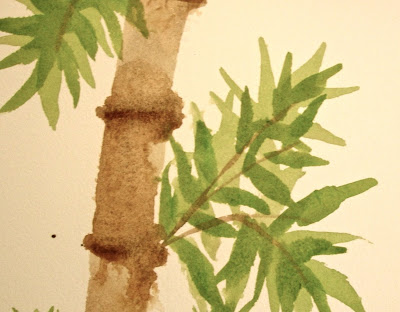
Some of my favorite watercolor brushes are a set of bamboo paint brushes I was gifted by a friend. I like to use them for regular watercolor painting, but the Chinese technique is fun to dabble in. I'm no expert on the subject, but it's a a lot of fun to try.
Here's a little history lesson and a how-to…
Soft bamboo brushes have round bristles, often made of goat or sheep hair. They hold a lot of liquid and are perfect for watercolor painting (even though ink is traditionally used with these brushes). The ink paintings are painted on rice paper and are often of bamboo and Chinese characters.
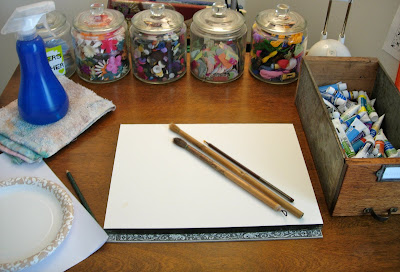
To get started, you'll need:
-bamboo brushes, one medium size and one very fine- You can use any soft round bristle brush though, to get the same effect
-watercolor paper & some extra for practicing
-watercolors- I used sap green, yellow ochre, & burnt umber
-spray bottle with water
-rag
-plates or a palate
The Chinese character for "courage" or "bravery" is said to include the 8 essential strokes for painting with bamboo brushes. I'm not sure I used 8 different brush strokes in my final painting, but it was fun to warm up by painting the character.
Start on a practice sheet of paper. We'll use this to paint the "courage" character and to practice painting the bamboo and leaves.
Here's a step-by-step of the character strokes-
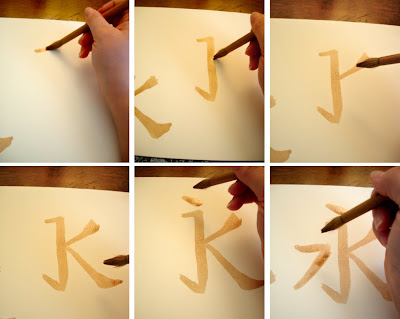
Next, let's practice bamboo-
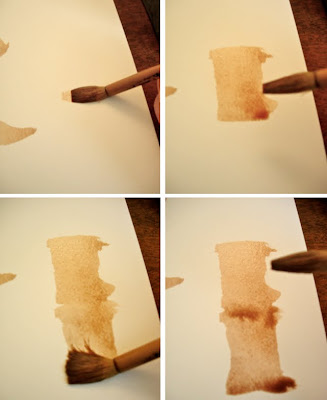
Load your brush with thin paint. Starting with the brush flat & horizontal on the paper, slowly pull down to make a wide stroke. This is one section of the bamboo. Add connecting sections below it. Where they join will create a natural looking joint in the bamboo.
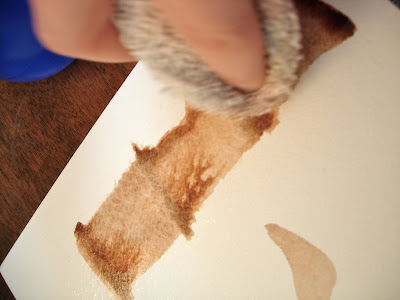
Blot with a towel if it's gotten a little too wet or to add texture.
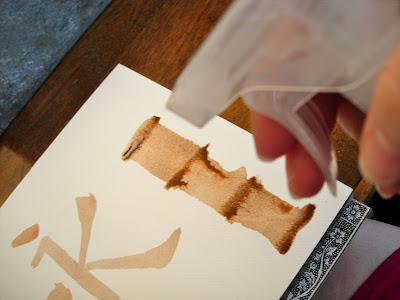
Spray with water to move the paint around and give more texture.
Now, for the leaves-

Bamboo leaves are medium length, long and pointed at the tip. Practice what feels best for creating these leaves. One of the simplest ways to create them is to load the brush with thin paint, push the bristles down, lift up while turning the brush handle, then pull it away to create the leaf tip.
Here's a video of me practicing the leaves.
Now for the painting-
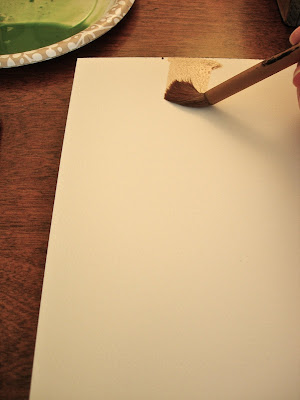
Start by making your first bamboo segment.
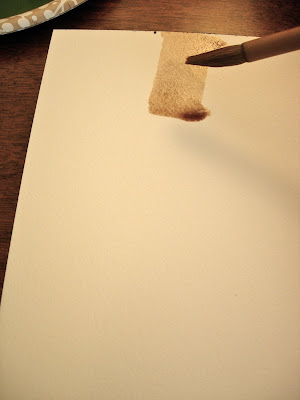
I left a gap in between my segments so I could go back and make the joints more defined. By adding the joints myself, I had more control of the paint. It has a natural look either way you create them.

Number 3…
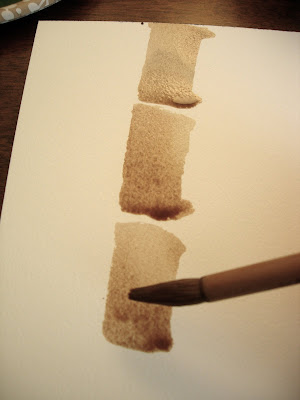
Number 4…
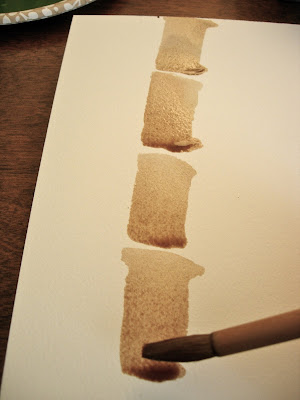
Now, with the tip of the brush, gather some darker paint and create the segment lines.
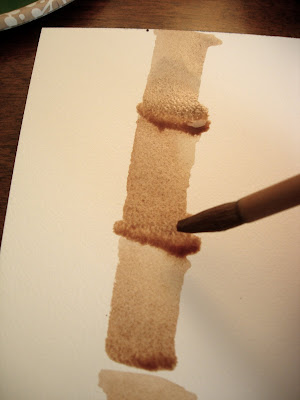
I added a few layers to create more depth. Let the paint settle, and then add another layer of paint on each segment.
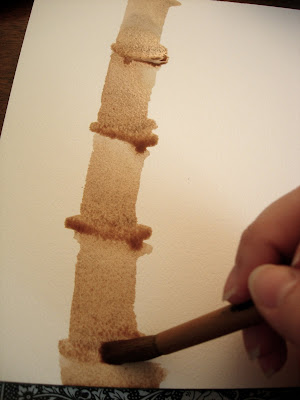
Blot to control the paint and add texture.
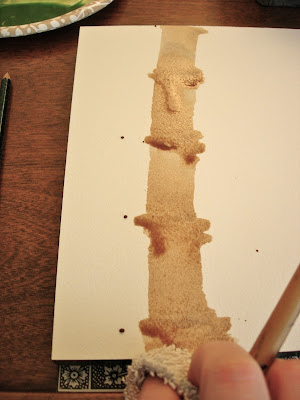 Using a fine brush, add the branches. Branches only grown from the segments of the bamboo plant.
Using a fine brush, add the branches. Branches only grown from the segments of the bamboo plant.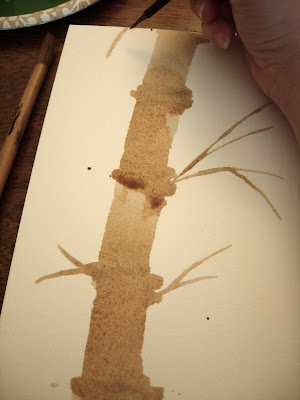 Spray the whole thing with water to give a little texture.
Spray the whole thing with water to give a little texture.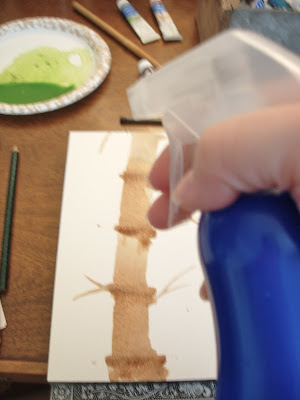 Begin adding the background leaves to the branches. Use thinner paint (more water).
Begin adding the background leaves to the branches. Use thinner paint (more water). 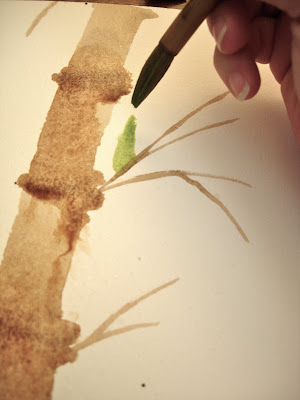 Keep adding…
Keep adding…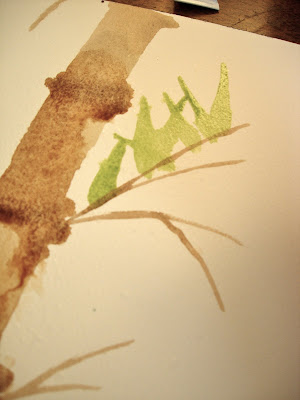
Fill the branches...
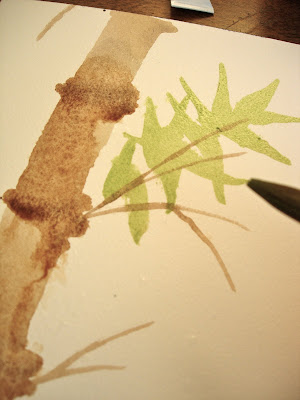
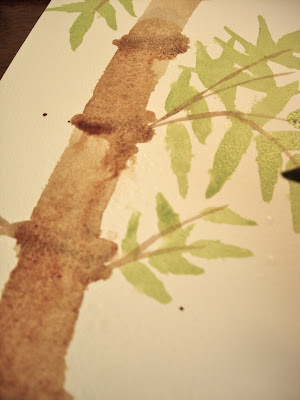
Add some more paint to you palette to deepen your color. Begin adding darker leaves in front of the lighter background leaves= about half the amount of the lighter ones.

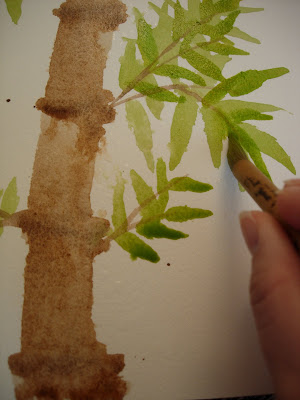 Spray a little water or blot if you need to.
Spray a little water or blot if you need to. 
Finished!
…and then, of course, I had to put a little more of an Erin spin on it…Here's the final piece of artwork.

No comments:
Post a Comment